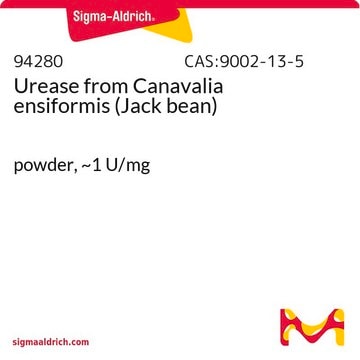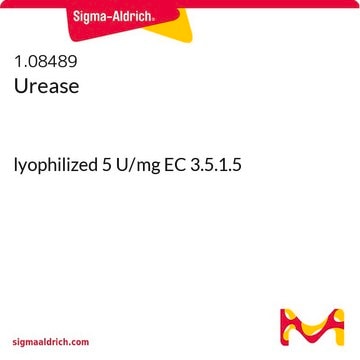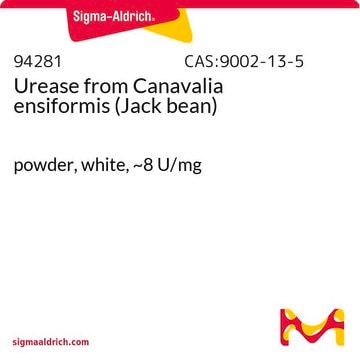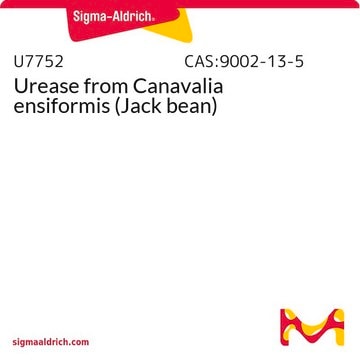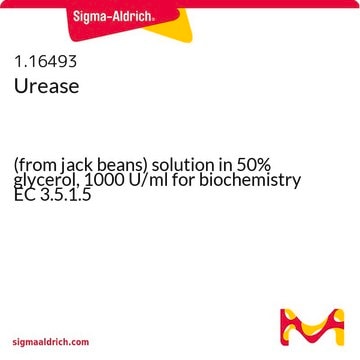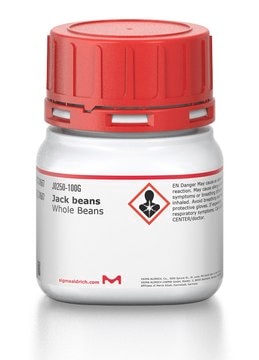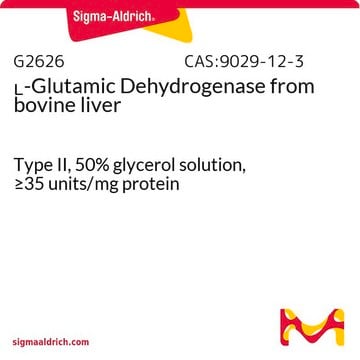The specific concentration of glycerol is considered proprietary, but will range from 50 - 70%.
U1875
Urease from Canavalia ensiformis (Jack bean)
Type III, glycerol solution, 500-800 units/mL
Synonyme(s) :
Jack bean urease, Urea amidohydrolase
Sélectionner une taille de conditionnement
Sélectionner une taille de conditionnement
About This Item
Produits recommandés
Source biologique
Canavalia ensiformis
Type
Type III
Forme
glycerol solution
Poids mol.
~544620
Concentration
500-800 units/mL
Température de stockage
2-8°C
Vous recherchez des produits similaires ? Visite Guide de comparaison des produits
Description générale
Composed of six subunits with total molecular weight: ~544,620
Application
- to assay creatine and creatine phosphate using the sample extracted from the left ventricle (LV) and septal tissue
- to determine the concentration of urea in a stabilized urine sample
- as one of the standards to measure the urease activity of plant extracts
Actions biochimiques/physiologiques
Définition de l'unité
Mention d'avertissement
Danger
Mentions de danger
Conseils de prudence
Classification des risques
Eye Irrit. 2 - Resp. Sens. 1 - Skin Irrit. 2 - STOT SE 3
Organes cibles
Respiratory system
Code de la classe de stockage
10 - Combustible liquids
Classe de danger pour l'eau (WGK)
WGK 1
Point d'éclair (°F)
Not applicable
Point d'éclair (°C)
Not applicable
Faites votre choix parmi les versions les plus récentes :
Certificats d'analyse (COA)
Vous ne trouvez pas la bonne version ?
Si vous avez besoin d'une version particulière, vous pouvez rechercher un certificat spécifique par le numéro de lot.
Déjà en possession de ce produit ?
Retrouvez la documentation relative aux produits que vous avez récemment achetés dans la Bibliothèque de documents.
Les clients ont également consulté
Articles
Probiotics exhibit an inhibitory effect on pathogens, help prevent chronic intestinal inflammatory diseases or atopic syndromes, and support the immune system.
-
How much glycerol is in Urease product no. U1875?
1 réponse-
Utile ?
-
Filtres actifs
Notre équipe de scientifiques dispose d'une expérience dans tous les secteurs de la recherche, notamment en sciences de la vie, science des matériaux, synthèse chimique, chromatographie, analyse et dans de nombreux autres domaines..
Contacter notre Service technique

